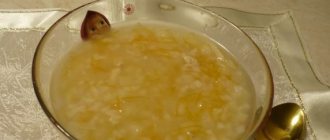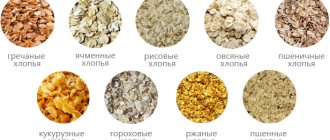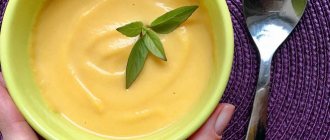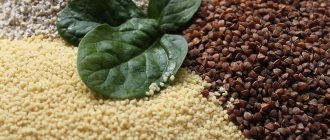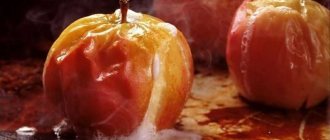How to teach a child to eat porridge?
Much has already been said about the benefits of porridge, but few people talk about how to teach a child to eat it. Here are our tips and ideas:
- Let's decorate together. Let your child add his favorite topping: berries, fruits, nuts, chocolate balls. The brighter the better. Even edible figurines of your favorite characters, funny faces and flowers are used.
- We bring variety. Oatmeal can be supplemented with coconut milk, honey, jam and dried fruits, wheat porridge with salt and seasonal herbs, and buckwheat with soft cheese, mushrooms or ham.
- We cook without dairy and gluten. It happens that a child cannot eat porridge due to a food allergy to certain components. In this case, try starting with rice, buckwheat or corn porridge with water or coconut milk: this way you will eliminate the most common allergens. Usually this problem disappears in high school.
- We use beautiful dishes. From bright plates with pictures, the child will eat with more enthusiasm, and you can tell funny stories about what you have prepared.
- We eat together. Prepare porridge for yourself and eat it with your child: this way you will set an example and show that it is really tasty and healthy.
How to teach a baby to eat porridge?
A child’s nutrition in the second year of life should include not only breastfeeding, but also a variety of cereals. How to accustom him to this diet?
Breastfeeding until the sixth month
The first feeding of porridge (solid feeding) is always a special event for the mother of the child. However, child nutrition specialists and doctors at children's clinics recommend continuing only breastfeeding until the end of the sixth month, and then, until the end of the first or second year of life, using a combination diet (breastfeeding and denser foods). However, as consultant pediatrician Petra Affeldt (Catholic Hospital Marienkrankenhaus, Hamburg) points out, this is only a general recommendation, and the specific diet is determined individually.
Porridge from the seventh month
A child's interest in spoon-feeding usually begins in the seventh month, when he observes adults eating. By this age, he can usually sit at a common family table, can sit (with support) quite straight, and does not immediately try, like an infant, to push solid food out of his mouth with his tongue. These signs clearly indicate that the child can gradually be accustomed to the appearance of additional food (complementary feeding). By this time, the mother of the infant also has a desire to gradually supplement breastfeeding with a new diet.
First experience
The first steps towards complementary feeding may be to immediately after the start of breastfeeding (so that the baby is not too hungry and very excited) to offer him 1-2 spoons of self-cooked vegetable porridge (for example, in the form of early carrot puree), and then continue breastfeeding.
The ideal menu for “beginners” is a homogeneous porridge (puree) made from only one type of vegetable (carrots, pumpkin), which does not overload the baby’s digestion and minimizes the risk of allergic reactions. Pediatricians recommend providing monotonous complementary feeding during the first week, for example, vegetable porridge from carrots, and then introducing new additives (potatoes, pumpkin, etc.) alternately and once a week.
Complementary foods and new components should be offered casually (as if “accidentally”), so that the baby does not feel the mother’s tension. But at the same time, it is necessary to carefully monitor how he reacts to new taste sensations. The reaction can vary greatly: some children swallow new foods with pleasure from the very beginning, others only in minimal quantities and with suspicion.
Combined nutrition
There may be a feeling that the baby does not like some components of complementary foods. But you should not immediately exclude them from your diet; you should try for another week, even 1 spoon per day. Then there is a chance that the baby will gradually get used to the new taste of complementary foods while breastfeeding continues.
According to most pediatricians, if the mother has enough breast milk, even a slightly later introduction of complementary foods or new additives to complementary foods does not pose any danger. On the contrary, according to pediatric gastroenterologists, continued breastfeeding in combination with complementary foods leads to more efficient absorption of food and the baby’s rapid adaptation to a new, unusual diet.
Gradual reduction of breastfeeding
Approximately four weeks after the start of complementary feeding, mandatory complementary feeding of porridge is established twice a day, after a month - three times a day, etc. Ideally, the entire process of reducing and stopping breastfeeding takes 4 to 6 months. This gradual and careful approach makes the transition easier for mother and baby.
The amount of breast milk in the mother is objectively reduced and the need to take special measures (for example, taking medications) to increase it disappears. On the other hand, gradually, step by step, the child’s digestive system is rebuilt and the risks, for example, of intestinal colic are reduced.
Typical conflict situations
There may be various obstacles to gradually stopping breastfeeding. Typical situations: the mother wants to stop breastfeeding, but the child wants to continue; At first, the child enthusiastically eats complementary foods, and then suddenly categorically refuses them.
The main advice is that there is no need to fight against your own child; it is advisable to relieve emotional tension (for example, by continuing breastfeeding). Most likely, the baby is not yet ready for the introduction of complementary foods and you just need to wait. But at the same time, consultation with pediatricians is necessary to rule out causes such as teething, any diseases, or psychological obstacles.
There are other situations: the mother wants to continue breastfeeding, but the baby refuses. This is most often observed in the second year of life and is an excellent sign of the child’s growing independence. The mother should support him in this and stop breastfeeding, even if she has every physiological ability to continue it.
There are very rare situations when breastfeeding needs to be stopped early. For example, some diseases of the mother, infections, for professional reasons, the need for surgical operations, etc. In these cases, bottle feeding with special milk formulas is continued.
How to cook properly?
- First rinse rice, millet and pearl barley with warm water at a temperature of 40 degrees, and then with hot water: this will remove dust, dirt and grease from long-term storage, and also steam the grains.
- Place all cereals, except buckwheat, in boiling water.
- Buckwheat porridge is poured into cold water, brought to a boil, reduced heat and cooked under the lid, without stirring, until all the liquid has evaporated.
- The longest to cook is pearl barley porridge, and the fastest is semolina: it only needs to be cooked for 2-3 minutes. This point is useful to consider if you have little time for breakfast.
- If you want to cook porridge with milk, boil it in water until half cooked, drain, add milk and cook until finished.
- Sugar should be added at the very beginning. For greater benefit, it is better to replace it with brown sugar or honey, which, on the contrary, is added at the end.
What should parents do?
So, the baby tries nutritious porridge for the first time. There is disgust and bewilderment on his face. He wrinkles his forehead and nose. Don't judge him for this. After all, this is actually a completely new consistency and taste for him. In addition, he still needs to get used to the spoon, because when he sucks the breast, the milk itself gets where it is needed. And now your child does not understand what to do with solid food the moment it enters the mouth. First, the baby makes sucking movements with his tongue, and a significant part of the porridge may end up on his chin. You will need to be patient and make new attempts, the main thing is not to get upset and give up, a small amount of porridge will still end up in his stomach. Over time, he will still learn to eat solid food. Help him through this process and your efforts will be rewarded.
Your rating Rating: 0 (0 votes)
Recipes for children: photos and step-by-step instructions
Below we present three ways to prepare the healthiest porridges - wheat, oatmeal and buckwheat. All recipes include ideas for fillings that will make the porridge tastier and more attractive to the child.
Wheat porridge with pear
What to take:
- 200 g millet cereal
- 1.2 liters of milk
- 50 grams regular sugar
- 30 grams brown sugar
- 2 ripe pears
- 20 grams butter
- a pinch of salt.
What to do:
- Place the cereal in boiling water, add salt and sugar. Boil until half cooked and drain the water, add milk, add white sugar and cook over low heat for another 20-30 minutes.
- Peel the pears and cut into cubes. Fry in butter over high heat for a couple of minutes, reduce the heat, add brown sugar and cook a little more until golden caramel.
- Place the finished porridge in plates, decorate with pears and pour over caramel. You can add cream and sprinkle with cinnamon if your child likes it.
Buckwheat porridge with mushrooms
What to take:
- 1 cup buckwheat
- ½ onion
- 300 grams of champignons (or seasonal mushrooms to taste
- 2 glasses of water
- 30 grams butter
- 3 tbsp. vegetable oil
- greenery
- salt and pepper to taste.
What to do:
- We rinse the buckwheat several times, then fill it with water, add salt and bring to a boil. Skim off the foam, reduce the heat to low and cook for another 15 minutes.
- Finely chop the onion, cut the mushrooms into cubes. Fry the onion in vegetable oil until soft, add the mushrooms and cook for another 5-7 minutes.
- Add the mushrooms to the buckwheat, add the butter, mix and cook for 5 minutes, covered. Sprinkle the finished porridge with herbs. You can add bacon or ham.
Oatmeal with berries
What to take:
- 1.5 cups oatmeal
- 600 ml milk
- 1-2 tbsp. Sahara
- ½ tsp. salt.
- For the filling: berries to taste, 60 grams of peanut butter.
What to do:
- Pour boiling water over the oatmeal, boil over medium heat for 2-3 minutes, add sugar and salt. Pour in milk and cook for another 1-2 minutes. Remove from heat and leave covered for 3 minutes. Add butter and mix.
- Wash and dry the berries, cut large ones into pieces.
- Place the porridge on plates, add a spoonful of peanut butter, stir and decorate with berries. You can add nuts and dried fruits.
Use a little imagination to prepare healthy and tasty meals for children - and our recipes and ideas will help you.
Feeding problem
Some people consider it advisable to feed their baby porridge from a bottle, but it is still better not to do this. If possible, of course, you make your life easier, but in relation to the child this is not practical. Many babies simply refuse to take the bottle seriously. If possible, you should start feeding him with a spoon. However, it is very difficult to teach a child to eat something that he does not like, and it is not worth it! Postpone this process for a couple of weeks, perhaps after some time he will change his mind.
Since spoon feeding is a fairly long process, you need to be patient. However, you need to make sure that the feeding spoon is comfortable for him. A lot depends on this too. An ordinary tea spoon is too big for a baby’s mouth, and most of these spoons are deep, so it’s difficult for him to eat from them. It is better to feed your baby with a coffee spoon with a not very deep bottom. Some mothers use wooden sticks (the kind that doctors use to examine a baby's throat).
Different children like different cereals. It will be better if you accustom your child to all types of cereals, but this must be done gradually. Pediatricians recommend starting with 1-2 teaspoons of porridge, gradually increasing the portions every day. If there are no adverse reactions, after 1-2 weeks the baby will be able to eat a full portion, and you can add another 1-2 spoons of a new type of porridge to it, also gradually increasing its volume (respectively, reducing the amount of the first type of porridge so that the child does not overeated).
Body signal
In some cases, the child feels the need to dominate one type of food, refusing another. For example, when a baby begins to take his first steps, he intuitively prefers dairy products rich in calcium. With the accumulation of substances necessary for the child’s body, this condition usually goes away, so parental panic in this case is inappropriate.
As for the frequency of feeding, here you also need to listen to the signals of the body - as they grow up, the child’s body less often experiences the need for satiety, so eating “by the hour” and the notorious feeding regimen should be adjusted in accordance with the needs of the grown-up body.
Three golden rules for feeding children
To solve almost any problems with feeding, adhere to simple rules: a hungry child eats, if he turns away ten times, he will eat once. Teach children to listen to their bodies, not those around them.
Children who are force-fed usually do not eat. On the other hand, a hungry child eats. To introduce porridge into the diet, wait until the baby is hungry, and there is a 90% chance that the process will start.
If you want to teach your child to eat porridge, get ready for stubborn resistance. The child does not understand the new taste, but sooner or later the second rule will work here: by offering a new product, even five or ten times, you will ultimately manage to interest him. An effective option in the process of teaching a child to eat porridge is to simply demonstrate a new product without trying to force him to try it. As you know, children try everything - they will try this too.

